Marrella: One of the interesting fossil creatures found in the Burgess Shale, a Cambrian rock formation A fossil from the Cambrian Age.
2. How Does The Collapse Of The Theory Of Evolution Demonstrate The Truth Of Creation?
When we ask how life on Earth emerged, we find two different answers:
One is that living things emerged by evolution. According to the theory of evolution, which makes this claim, life began with the first cell, which itself emerged by chance or by some hypothetical natural laws of "self-organization." Again as a result of chance and natural laws, this living cell developed and evolved, and by taking on different forms gave rise to the millions of species of life on Earth.
The second answer is "Creation." All living things came into existence by being created by an intelligent Creator. When life and the millions of forms it takes, which could not possibly have come into existence by chance, were first created, they had the same complete, flawless, and superior design that they possess today. The fact that even the simplest-looking forms of life possess such complex structures and systems that could never have come about by chance and natural conditions is a clear proof of this.
Outside these two alternatives, there is no third claim or hypothesis today regarding how life emerged. According to the rules of logic, if one answer to a question with two alternative possible answers is proved to be false, then the other must be true. This rule, one of the most fundamental in logic, is called disjunctive inference (modus tollendo ponens).
In other words, if it is demonstrated that living species on Earth did not evolve by chance, as the theory of evolution claims, then that is clear proof that they were formed by a Creator. Scientists who support the theory of evolution agree that there is no third alternative. One of these, Douglas Futuyma, makes the following statement:
Organisms either appeared on the earth fully developed or they did not. If they did not, they must have developed from pre-existing species by some process of modification. If they did appear in a fully developed state, they must indeed have been created by some omnipotent intelligence. 4
The fossil record provides the answer to the evolutionist Futuyma. The science of fossils (paleontology) shows that all living groups emerged on Earth at different times, all at once, and perfectly formed.
All the discoveries from excavations and studies over the last hundred years or so show that, contrary to evolutionists' expectations, living things came into existence suddenly, in perfect and flawless form, in other words that they were "created." Bacteria, protozoa, worms, molluscs, and other invertebrate sea creatures, arthropods, fish, amphibians, reptiles, birds, and mammals all appeared suddenly, with complex organs and systems. There are no fossils that show any so-called "transition" between them. Paleontology bears the same message as other branches of science: Living things did not evolve, but were created. As a result, while evolutionists were trying to prove their unrealistic theory, they by their own hands produced proof of creation.
Robert Carroll, an expert on vertebrate paleontology and a committed evolutionist, comes to admit that the Darwinist hope has not been satisfied with fossil discoveries:
Despite more than a hundred years of intense collecting efforts since the time of Darwin's death, the fossil record still does not yield the picture of infinitely numerous transitional links that he expected. 5
The Cambrian Explosion is enough to tear down the theory of evolution
The world of living things is divided by biologists into such fundamental groups as plants, animals, fungae etc. These are then subdivided into different "phyla." When designating these phyla, the fact that each one possesses completely different physical structures should always be borne in mind. Arthropoda (insects, spiders, and other creatures with jointed legs), for instance, are a phylum by themselves, and all the animals in the phylum have the same fundamental physical structure. The phylum called Chordata includes those creatures with a notochord or, most commonly, a spinal column. All the large animals such as fish, birds, reptiles, and mammals that we are familiar in daily life are in a subphylum of Chordata known as vertebrates.
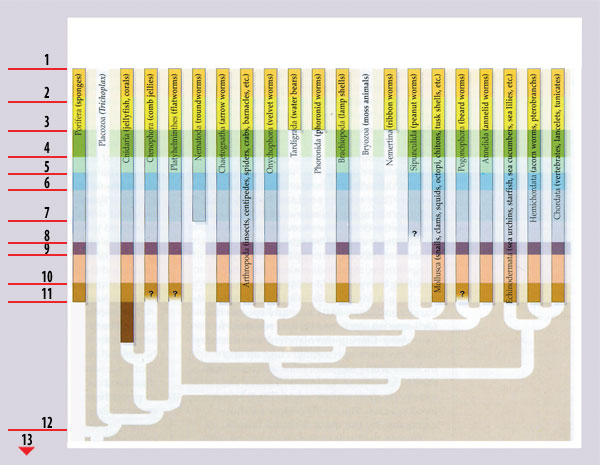 1) Present day, 2) Cenozoic 65 My ago, 3) Cretaceous 144 My ago, 4) Jurassic 208 My ago, 5) Triassic 245 My ago, 6) Permian 286 My ago, 7) Carboniferous 360 My ago, 8) Devonian 408 My ago, 9) Silurian 438 My ago, 10) Ordovician 505 My ago, 11) Cambrian 550 My ago, 12) Venedian 630 My ago, 13) Proterozoic 2,500 My ago. THE CAMBRIAN EXPLOSION TEARS UP THE EVOLUTIONARY "TREE OF LIFE"
When we examine this figure, the miracle of the Cambrian Explosion is obvious. There is only one phylum before the Cambrian Age (the Cnidaria, which include jellyfish and corals). In the Cambrian Age, however, 13 completely different phyla suddenly emerged.
This picture is the opposite of the theory of evolution, because evolution maintains that living phyla increased in stages, like the branches of a tree.
The evolutionists who drew up the figure try to gloss over this gap by talking about "theoretical links." We can see pale lines at the bottom of the figure joining the coloured boxes (in other words, genuine phyla of which fossil remains have been found). These are imaginary links required by the theory of evolution, but of which no evidence has ever been found.
If the theory of evolution were true, if these links were real and not imaginary, then fossils of transitional groups should have been discovered. Despite all the fossil research of the last 150 years, the fact that these links are still just a dream shows that the theory of evolution is nothing but a fantasy. |
|---|
There are around 35 different phyla of animals, including the Mollusca, which include soft-bodied creatures such as snails and octopuses, or the Nematoda, which include diminutive worms. The most important feature of these phyla is, as we touched on earlier, that they possess totally different physical characteristics. The categories below the phyla possess basically similar body plans, but the phyla are very different from one another.
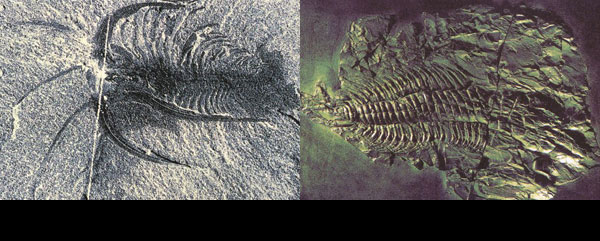
So how did these differences come about?
Let us first consider the Darwinist hypothesis. As we know, Darwinism proposes that life developed from one single common ancestor, and took on all its varieties by a series of tiny changes. In that case, life should first have emerged in very similar and simple forms. And according to the same theory, the differentiation between, and growing complexity in, living things must have happened in parallel over time.
According to Darwinism, life must be like a tree, with a common root, subsequently splitting up into different branches. And this hypothesis is constantly emphasized in Darwinist sources, where the concept of the "tree of life" is frequently employed. According to this tree concept, one phylum must first emerge, and then the other phyla must slowly come about with minute changes over very long periods of time.
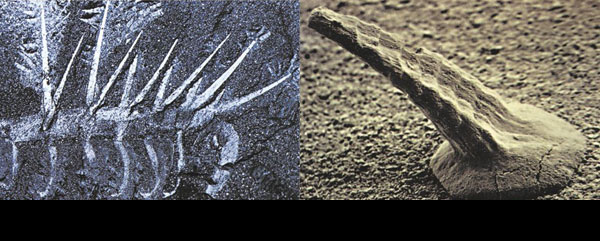
Hallucigenia: One of the creatures that suddenly emerged in the Cambrian Age. This and many other Cambrian fossils have hard, sharp spines to protect them from attack. One thing that evolutionists cannot account for is how these creatures should have such an effective defense system when there were no predators around. The lack of predators makes it impossible to explain these spines in terms of natural selection.
That is the theory of evolution's claim. But is this really how it happened?
Definitely not. Quite the contrary, animals have been very different and complex since the moment they first emerged. All the animal phyla known today emerged at the same time, in the middle of the geological period known as the Cambrian Age. The Cambrian Age is a geological period estimated to have lasted some 65 million years, approximately between 570 to 505 million years ago. But the period of the abrupt appearance of major animal groups fit in an even shorter phase of the Cambrian, often referred to as the "Cambrian explosion." Stephen C. Meyer, P. A. Nelson, and Paul Chien, in an article based on a detailed literature survey, dated 2001, note that the "Cambrian explosion occurred within an exceedingly narrow window of geologic time, lasting no more than 5 million years."6
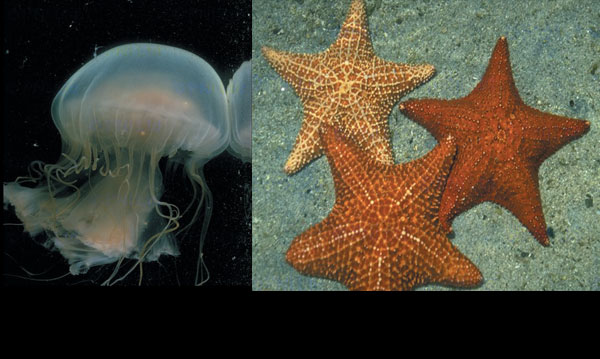
Many complex invertebrates such as starfish and jellyfish emerged suddenly some 500 million years ago with no so-called evolutionary ancestor before them. In other words, they were created. They were no different from those alive today.
Before then, there is no trace in the fossil record of anything apart from single-celled creatures and a few very primitive multicellular ones. All animal phyla emerged completely formed and all at once, in the very short period of time represented by the Cambrian Explosion. (Five million years is a very short time in geological terms!)
The fossils found in Cambrian rocks belong to very different creatures, such as snails, trilobites, sponges, jellyfish, starfish, shellfish, etc. Most of the creatures in this layer have complex systems and advanced structures, such as eyes, gills, and circulatory systems, exactly the same as those in modern specimens. These structures are at one and the same time very advanced, and very different.
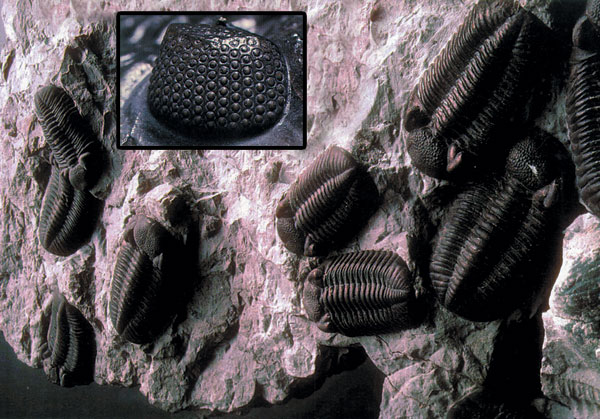
One of the complex invertebrates that suddenly emerged in the Cambrian Age some 550 million years ago were the fossil trilobites above. Another feature of trilobites that poses a quandary for evolutionists is their compound eye structure. Trilobites' very advanced eyes possessed a multi-lens system. That system is exactly the same as that found in many creatures today, such as spiders, bees, and flies. The sudden emergence of such a complex eye structure in a creature that lived 500 million years ago is enough on its own to consign evolutionists' theories based on chance to the waste bin.
 Prof. Philip Johnson |
|---|
Richard Monastersky, a staff writer at Science News journal, states the following about the Cambrian explosion, which is a deathtrap for evolutionary theory:
A half-billion years ago, ...the remarkably complex forms of animals we see today suddenly appeared. This moment, right at the start of Earth's Cambrian Period, some 550 million years ago, marks the evolutionary explosion that filled the seas with the world's first complex creatures.7
Phillip Johnson, a professor at the University of California at Berkeley who is also one of the world's foremost critics of Darwinism, describes the contradiction between this paleontological truth and Darwinism:
Darwinian theory predicts a "cone of increasing diversity," as the first living organism, or first animal species, gradually and continually diversified to create the higher levels of taxonomic order. The animal fossil record more resembles such a cone turned upside down, with the phyla present at the start and thereafter decreasing. 8
As Phillip Johnson has revealed, far from its being the case that phyla came about by stages, in reality they all came into being at once, and some of them even became extinct in later periods. The meaning of the emergence of very different living creatures all of a sudden and perfectly formed, is creation, as evolutionist Futuyma has also accepted. As we have seen, all the available scientific discoveries disprove the claims of the theory of evolution and reveal the truth of creation.
Footnotes
4 Douglas J. Futuyma, Science on Trial, New York: Pantheon Books, 1983. s. 197
5 Derek A. Ager, "The Nature of the Fossil Record", Proceedings of the British Geological Association, cilt 87, no. 2, (1976), s. 133
6 Richard Monestarsky, "Mysteries of the Orient", Discover, Nisan 1993, s. 40
7 Phillip E. Johnson, "Darwinism's Rules of Reasoning", Darwinism: Science or Philosophy, Foundation for Thought and Ethics, 1994, s. 12
8. Phillip E. Johnson, "Darwinism's Rules of Reasoning,” in Darwinism: Science or Philosophy by Buell Hearn, Foundation for Thought and Ethics, 1994, p. 12. (emphasis added)
- Introduction
- 2. How does the collapse of the theory of evolution demonstrate the truth of creation?
- 1. Why ıs the theory of evolution not scientifically valid?
- 3. How far back do traces of man go? Why do these not support evolution?
- 4. Why ıs the theory of evolution ''not the basis of biology''?
- 5. Why is the existence of different races not evidence for evolution?
- 6. Why is the claim that human and ape genomes are 99 percent similar and that this confirms evolution not true?
- 7. Why is the claim that dinosaurs evolved ınto birds an unscientific myth?
- 8. What scientific forgery ıs the myth that ''human embryos have gills'' based on?
- 9. Why is ıt deceptive to portray cloning as ''evidence for evolution''?
- 10. Could life have come from outer space?
- 11. Why does the fact that the earth is four billion years old not support the theory of evolution?
- 12. Why are wisdom teeth not evidence of evolution?
- 13. How do the complex structures of the most ancient creatures demolish the theory of evolution?
- 14. Why is denying the theory of evolution portrayed as rejecting development and progress?
- 15. Why is ıt mistaken to think that God could have created living things by evolution?
- 16. Why is it wrong to think that evolution could be confirmed ın the future?
- 17. Why is metamorphosis not evidence of evolution?
- 18. Why is it impossible to account for dna by ''chance''?
- 19. Why is it that bacterial resistance to antibiotics is not an example of evolution?
- 20. What kind of relationship is there between creation and science?

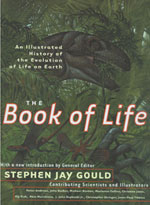 The above illustration is taken from The Book of Life, published in 2001 under the editorship of the late Stephen Jay Gould, one of the world's most prominent evolutionists. The illustration explains which different groups of animals emerged in which periods. On the left, the various geological periods are listed, starting 2,500 million years ago. The coloured columns show the major phyla of animals. (The colours in the columns refer to different periods.)
The above illustration is taken from The Book of Life, published in 2001 under the editorship of the late Stephen Jay Gould, one of the world's most prominent evolutionists. The illustration explains which different groups of animals emerged in which periods. On the left, the various geological periods are listed, starting 2,500 million years ago. The coloured columns show the major phyla of animals. (The colours in the columns refer to different periods.)